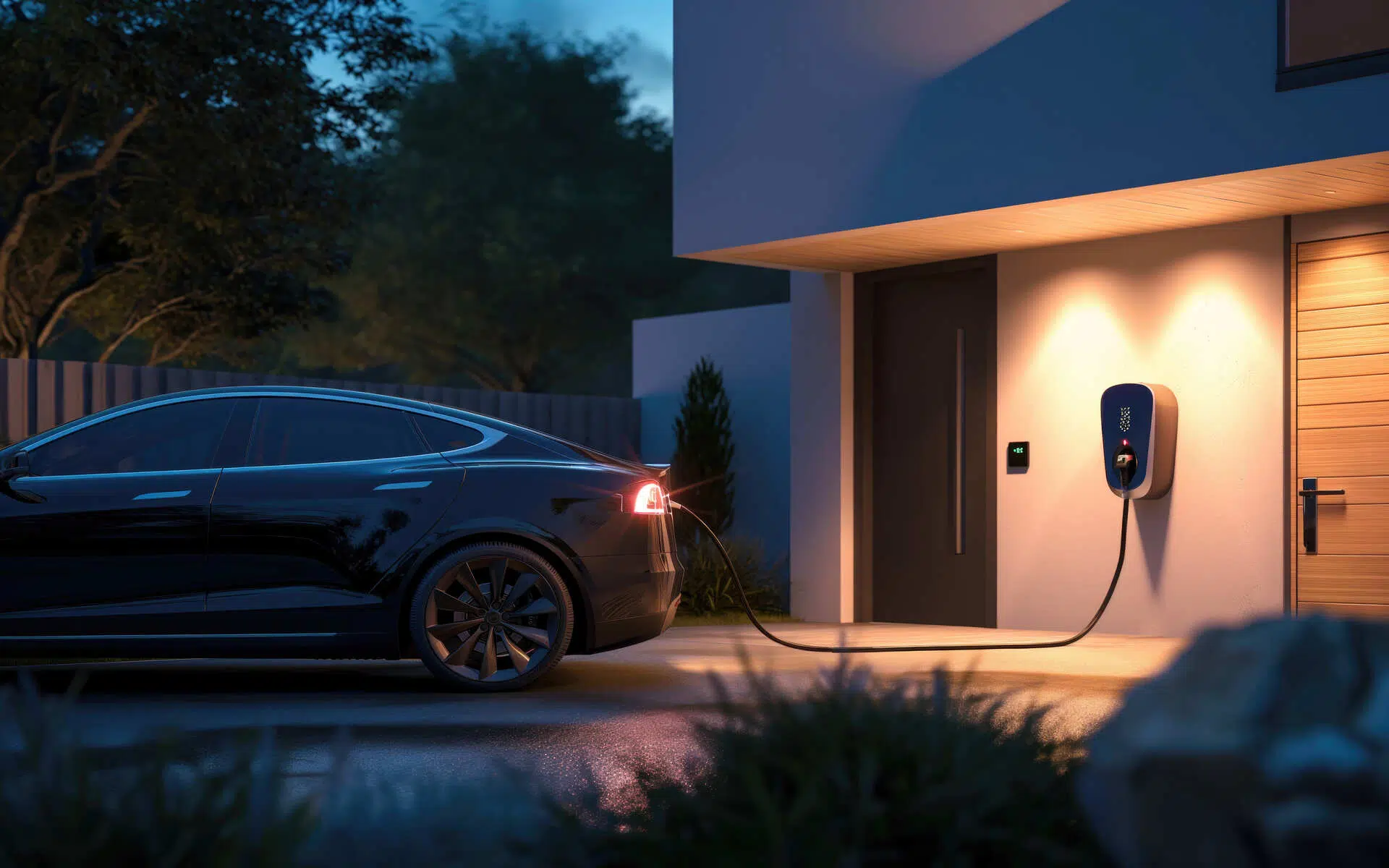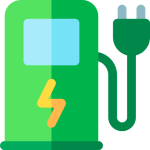
You’ve made the smartest investment by buying an electric vehicle and installing a Level 2 wall charger. You’ve even got your portable cable for public charging. But savvy EV ownership in Australia extends far beyond the core hardware. The cables themselves—your precious, high-power lifelines—require protection, organisation, and management, especially in harsh Australian weather.
Neglecting simple accessories for cable management is not just untidy; it dramatically increases the risk of damage, wear, and potential safety hazards. This guide focuses on the most practical and essential Must-have EV accessories Australia owners need, specifically those that protect your expensive cables and streamline your charging routine.
1. The Lifesaver: EV Charging Cable Bags
Your portable charging cable (the Type 2 cable you take to untethered public stations) is an expensive, precision piece of electrical equipment, not a rope. Dragging it out of the boot loose, or stuffing it under a pile of shopping, risks kinking the internal conductors and damaging the sealed plugs.
Why a Cable Bag is Essential:
- Protection from Dirt and Debris: Australian roads, dust, and rain mean your cable can get messy. Storing a dirty cable in a dedicated bag prevents road grit, mud, and water from contaminating your car’s boot.
- Preventing Kinks and Damage: Quality bags are designed to hold the cable in a neat coil, preventing sharp bends that stress the internal wiring. This simple act extends the cable’s lifespan.
- Convenience and Tidy Storage: A brightly coloured, purpose-built bag makes the cable easy to grab from the boot and keeps your charging essentials neatly separated from groceries or luggage.
EV Evolution Recommends: Look for durable, waterproof bags, often featuring carry handles and internal pockets for smaller items like charging network RFID cards or plug adaptors.
2. The Daily Essential: EV Cable Holder and Docking Stations
When you charge daily in your garage or carport, what do you do with the cable when it’s not plugged into the car? Hanging it on a nail or draping it over the wall charger unit is the fastest way to ruin your investment.
The EV cable holder (or plug holster/docking station) is arguably the single most important accessory for home EV charger installation.
Key Benefits of a Cable Holder:
- Prevents Trip Hazards: A coiled cable on the floor is a major tripping risk for family members, especially in a dimly lit garage. A wall-mounted hook keeps the cable securely off the ground.
- Protects the Connector: The charging plug (the ‘gun’) itself is the most sensitive part of the cable. A dedicated Type 2 Plug Dock allows you to securely clip the plug into a wall-mounted holster. This keeps the electrical contacts clean, dry, and protected from dust, insects, and accidental knocks from bikes or tools.
- Reduces Strain on the Wall Charger: If you have a tethered wall box, wrapping the heavy cable around the charger unit itself can put stress on the unit’s casing and internal wiring. A separate EV cable holder absorbs the cable’s weight, protecting your expensive wall box.
Choosing the Right Holder: Select a heavy-duty, weather-resistant plastic or powder-coated steel EV cable holder that is specifically designed for your plug type (Type 2 being the most common). Many popular models include a hook or space for coiling the excess cable alongside the docking holster.
3. The Public Safety Net: Cable Locks and Anti-Theft Protection
While Level 2 charging sessions automatically lock the plug to the vehicle’s inlet, many charging stations (both public and private) rely on the BYO Type 2 cable model. This leaves your cable vulnerable to theft or unplugging when you walk away.
Security Solutions for Public Charging:
- Cable Anti-Theft Devices: These are small, hardened rings or clamps that lock your portable cable plug to the wall socket itself, ensuring nobody can disconnect and steal your cable while you’re having coffee.
- Theft-Deterrent Holsters (for Home): If your home charging is installed in a shared or accessible location (like an apartment car park or shared driveway), a lockable EV cable holder is crucial. These units feature a padlock mechanism that secures the plug within the holster when the cable is not in use, preventing casual theft or unauthorised use.
Note: While your car keeps the plug locked to the car’s end, security accessories protect the plug-to-wall-socket connection or the entire cable when it’s stored.
4. Protection for the Aussie Climate: Cable Retractors and Canopies
Australia’s weather extremes—from intense UV and heat to sudden downpours—pose unique challenges to charging infrastructure.
- Cable Retractors: For permanent home installations with a fixed cable (tethered wall boxes), a cable retractor (like a ceiling-mounted spring mechanism) keeps the entire length of the cable taut and suspended above the ground. This prevents the cable from lying in puddles, being exposed to harsh UV when not in use, or being run over by a car.
- Protective Canopies: If your wall charger is mounted outdoors in an unsheltered area, a small, purpose-built canopy or hood can shield the unit and the stored plug from direct sun, driving rain, and salt spray (critical in coastal areas). Reducing the temperature of the charger in direct sun also helps maintain peak charging efficiency.
🛒 Streamline Your Setup with EV Evolution Accessories
The key to long-lasting, safe, and stress-free EV ownership is treating your charging equipment with the respect it deserves. Investing in simple, quality cable management and protection accessories safeguards your most critical charging hardware and prevents costly replacements down the line.
At EV Evolution, we’ve curated a selection of the highest quality Must-have EV accessories Australia owners demand, tested for durability and performance in the local climate.
Protect your investment and eliminate cable clutter today. Shop our range of certified Cable Bags, Holders, and Protection products.
Frequently Asked Questions
How long should my portable EV charging cable be?
Most owners choose 5-8 m. This length balances reach to public chargers and manageability for storage. Choose longer only if you frequently encounter awkward parking layouts; remember longer cables are heavier and bulkier to store.
Can I use any lock on my Type 2 cable?
Use locks designed for EV cables or lockable holders compatible with Type 2 plugs. Generic clamps or devices that deform the connector can damage seals and contacts and may void warranties.
Is a retractable cable safe for high-power charging?
Quality retractors designed for EV use can be safe; however, ensure the retractor’s weight and coil mechanism are rated for your cable’s size and that the installer confirms compatibility with your charger and warranty.
How often should I inspect my cable and plugs?
Visually inspect every month and after any event where the cable may have been stressed (e.g. run over, crushed, exposed to salt spray). Replace immediately if you see exposed conductors, deep cuts, melted insulation or if the connector heats abnormally during charging.
Will storing a cable in a bag void my warranty?
No – storing a cable properly protects it. However, altering the cable or using incompatible accessories might. Keep receipts and follow manufacturer storage guidance to avoid warranty issues.
Are lockable cable holders legal in apartment car parks?
Lockable holders are legal, but check building management rules and local by-laws. In shared facilities, communicate with strata or building management before installing permanent mounts.
About EV Evolution
EV Evolution is the leading online platform dedicated to Australian electric vehicle owners and enthusiasts. We foster a vibrant community, delivering essential EV news and insights, and enhancing user engagement through our innovative, AI-powered chatbot for dynamic discussions. Our mission is to empower Australian electric vehicle owners and enthusiasts by fostering a vibrant, AI-driven online community that connects, informs, and advances the nation’s electric vehicle landscape.




